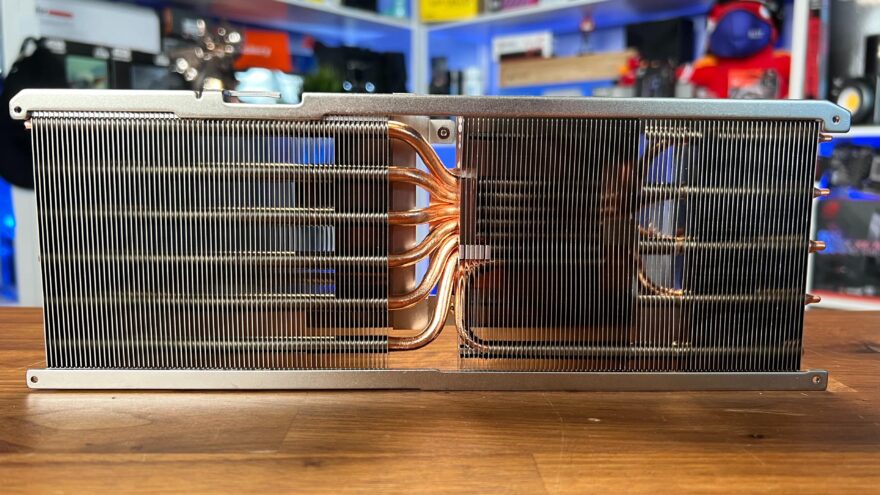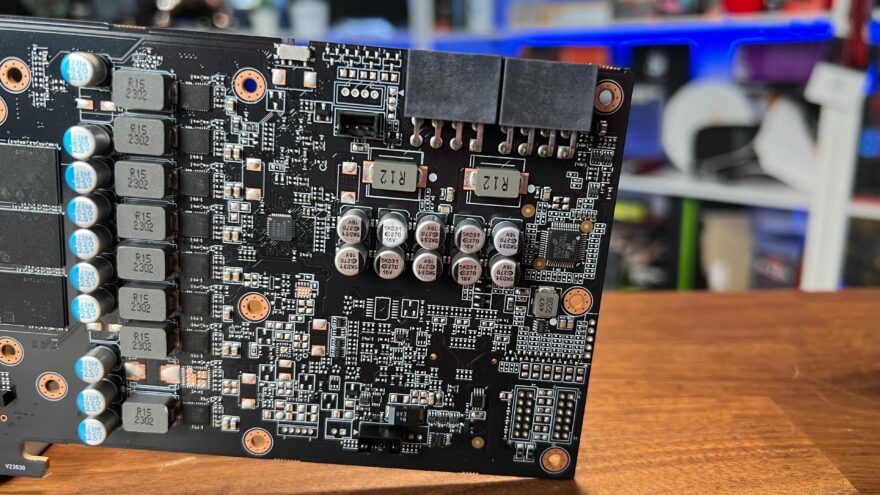Gigabyte RX 7800 XT Gaming OC 16GB Graphics Card Review
Andy Ruffell / 8 months ago
A Closer Look
So first things first. The card is big at 302mm long, 130mm high and 56mm thick, though actually comes in much smaller than the likes of the XFX MERC 319 and Sapphire Nitro+ 7800 XT cards that we’ve also looked at. It also weighs in at 1515g so again, not the heaviest card we’ve had come through it, but certainly no slouch in terms of size and weight either.
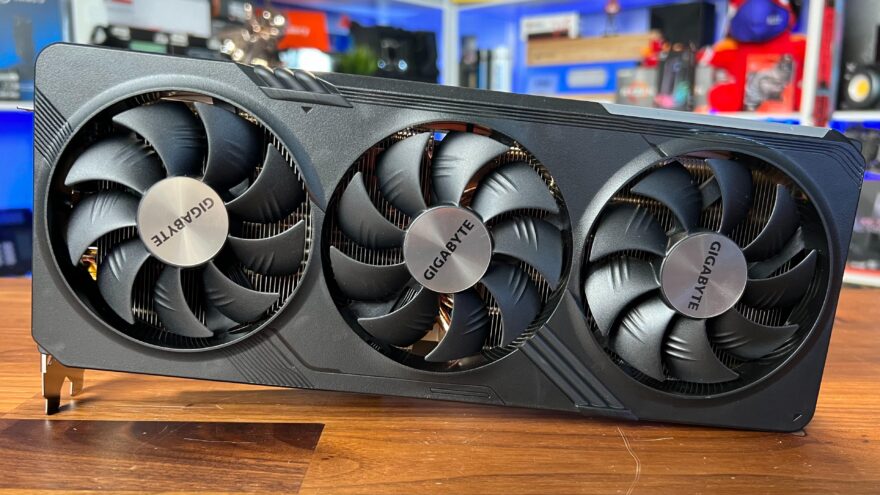
The Windforce cooler hasn’t changed much for this generation and still includes three Gigabyte branded 90mm fans with the outer two spinning alternately to the middle while incorporating blades with ridges for increased airflow and reduced turbulence.
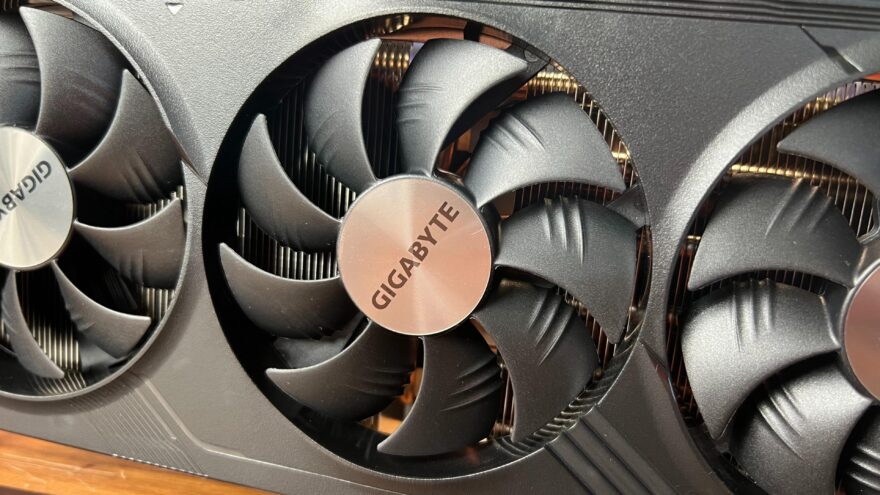
The top of the card is where we find more Gigabyte branding in RGB of course, along with a simple Radeon logo towards the end. We can also see how the front shroud wraps around the heatsink slightly and meets towards the large backplate.
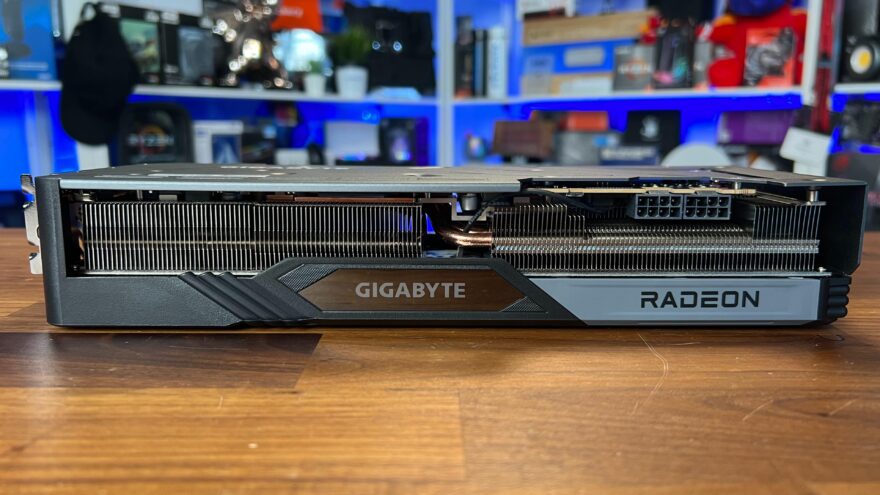
The backplate covers the full PCB with a small cut-out area towards the end to allow heat to pass through. Other than the simple Gigabyte logo, it’s a pretty standard affair and isn’t the thickest backplate we’ve seen and is more for decoration than functionality.
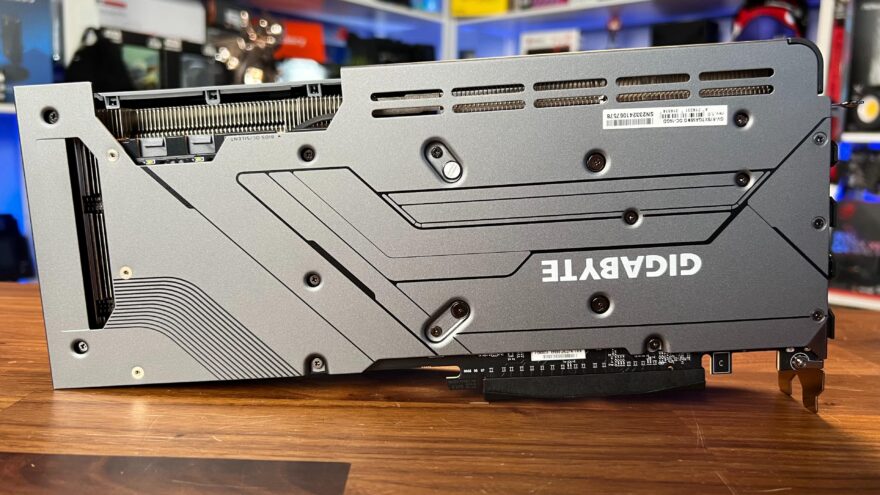
The I/O is pretty typical for what we’ve seen on other 7800 XT cards with two DisplayPort connectors and two HDMI ports along with ventilation on the rest of the I/O.
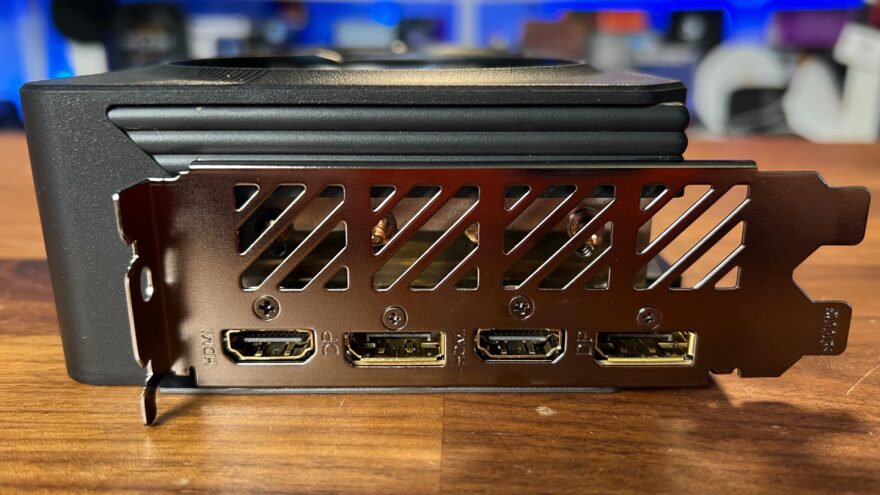
Stripping the card down to reveal the PCB where we find a total of eight 2GB GDDR6 memory ICs surrounding the GPU core and some pretty well laid out VRM circuitry.
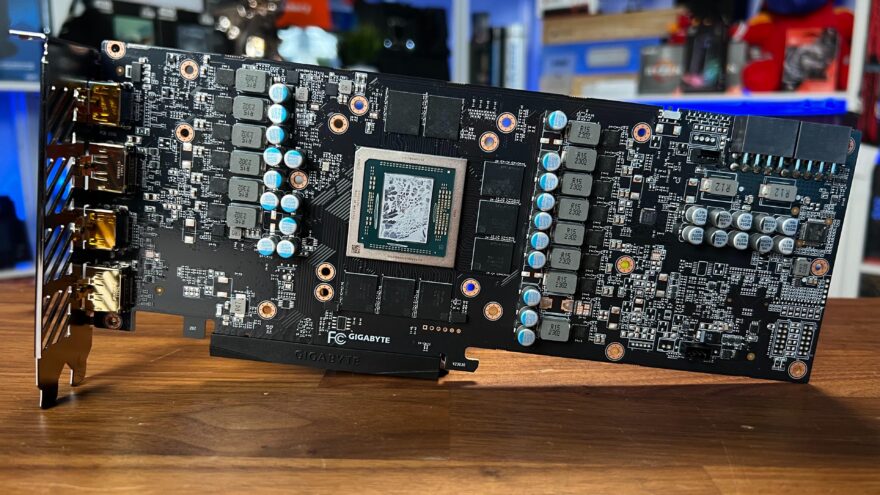
There are two 8-pin power connectors as expected, because AMD haven’t gone down the same route as NVIDIA with a 12VHPWR connector. There’s also a BIOS switch just to the left.
In terms of the VRM setup, the card features 14 phases in total which are split between 8 for the GPU, 2 for the SOC, 2 for the memory and 2 for other smaller components.
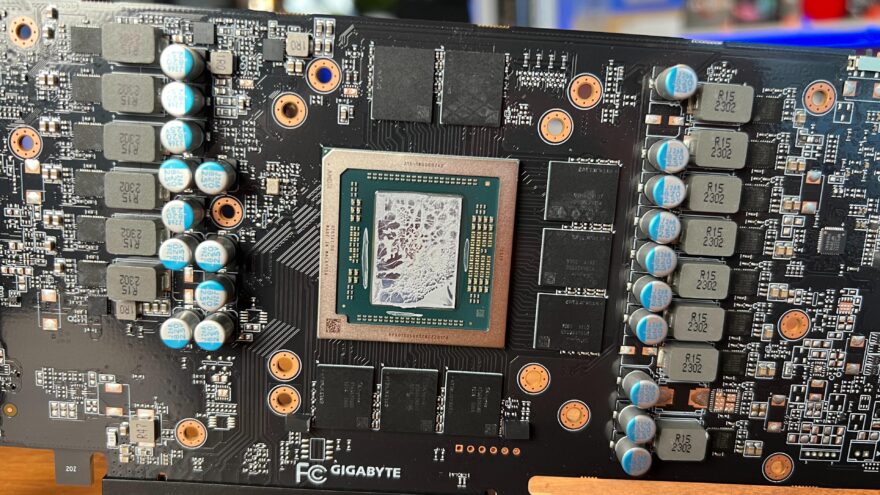
The heatsink is large and includes a large copper plate that makes direct contact with the GPU core, while composite heatpipes push the heat away to opposite ends of the heatsink for the best cooling efficiency. The memory ICs also make direct contact with the copper plate, while the phases sit under separate plates.
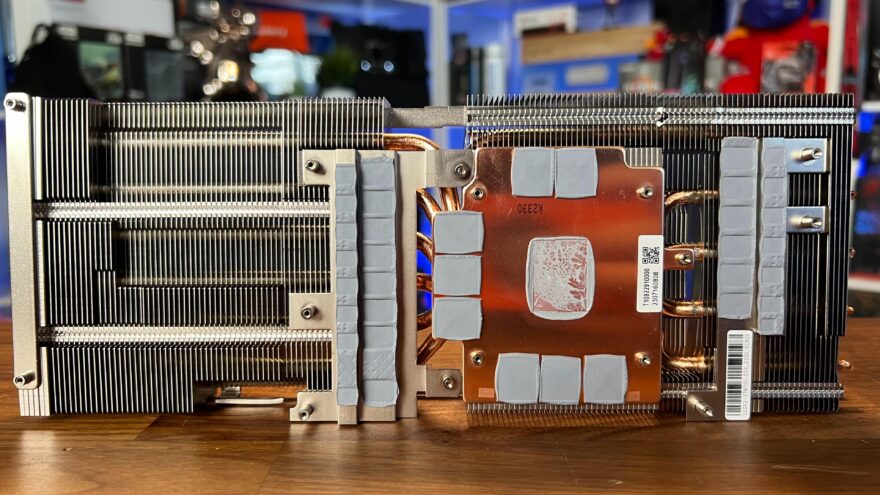
From the other side, we get a clear view of the heatpipes and how the main part of the heatsink is split, along with a frame that sits around it for extra rigidity.
